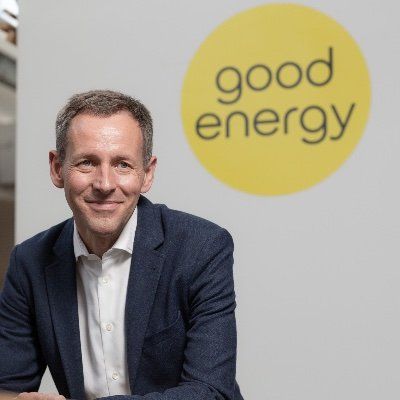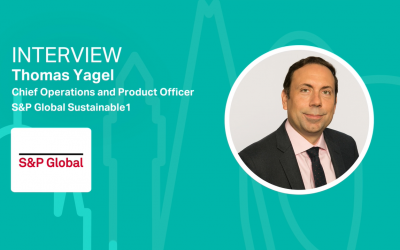Why time matched carbon free energy is the future of the Greenhouse Gas Protocol
The most widely used and globally recognised framework for measuring emissions, the Greenhouse Gas Protocol, is considering a move towards hourly matching. But some parties are pushing back — Good Energy proves their concerns do not stand up.

Practically every business and organisation across the world that tracks its emissions uses the same standardised framework for measurement and management — The Greenhouse Gas (GHG) Protocol.
Under the GHG Protocol an organisation’s scope 2 emissions from electricity are reported via two methods.
The first is location-based, meaning the average emissions for the grid in the region where the electricity is used. This generally means a national, annual figure, which is not very granular.
The second is market-based, which considers if the organisation is purchasing renewable electricity. The problem being that this method is currently wide-open to greenwashing of the kind Good Energy has regularly called out.
An organisation may choose to actively purchase renewable power via a Power Purchase Agreement (PPA) or genuine renewable tariff, bundled with the relevant renewable energy certificates (RECs). But ‘zero emissions’ can also be achieved via the purchase of unbundled certificates — and frequently is.
As the global framework for measuring and management emissions the GHG Protocol should be a powerful tool driving decarbonisation. But neither of these reporting methods are targeted enough to turn corporate carbon reduction targets into clearly traceable demand for renewable electricity.
Of course, the multiple stakeholders running the GHG Protocol are aware of this. Just as confidence in the UK’s renewable energy certificate based system has plummeted REC’s shortcomings have been recognised in markets all around the world.
What is needed is a solution which not only encourages renewable deployment but is designed for a future flexible, efficient energy system.
The hourly matching debate
Enter hourly matching. A time-based system which provides a far truer picture of an organisations emissions, incentivising a technology mix which actually provides power when its needed and consumers to shift their usage to times when clean power is abundant.
However, this is not how some of the biggest players in the debate see it. Big tech companies have huge energy use, only increasing with the growth of AI, coupled with ambitious carbon reduction targets. Alphabet has fully thrown its weight behind time-based matching, with Microsoft moving this way too.
But Amazon and Meta favour an even less stringent certificate market than exists today, in which they can match their high energy usage to certificates relating to power generated at entirely different times and in completely different markets.
Their argument is that the time-based approach is ‘utopian’, whilst their method would allow them to incentivise clean power where the grid is dirtiest — akin to the voluntary carbon market.
We believe the fact that Good Energy has achieved 90% carbon free energy (CFE) for a number of years, dismantles their argument.
Simple
Acquiring the requisite number of RECs needed to match a company’s annual energy usage at the end of the year and putting a ‘zero’ in the market based column of its scope 2 emissions reporting table is simple. So asking the same company to start tracking hourly carbon intensity might sound like a jump in complexity.
We would not pass off what Good Energy does to achieve 90% CFE as simple — it requires a lot of expertise in trading, forecasting and PPA procurement which has been built up over many years.
But that is precisely why it need not be complex for organisations. Suppliers are already trading power in this way to one degree or another.
Scalable
Another critique of CFE is that it is not scalable. To some extent this is precisely the point — the restriction to allowing matching of power used with power generated in the same time and place is a deliberate limitation. If an organisation hits that limitation it must go further to reduce emissions, whether that is by flexing their energy use or investing in new generation.
And there is strong evidence that it is possible to scale and push these limits. Google, a huge energy user, says it is on track to achieve its target of 90% CFE for its UK operations this year. This is no mean feat.
Good Energy has met 90% for several years and whilst we are not the largest supplier, currently supplying about half a terawatt hour a year to customers across commercial and domestic, we do have larger multi-site business customers and are scaling up the volume we supply. This will require big PPA contracts and more expert energy trading and optimisation, but it is eminently possible.
Accessible
So CFE is possible for massive energy consumers like Google. What about small businesses?
When we launched hourly matching we made it standard for all business customers on a half hourly contract. If you have a half hourly meter, we can provide you with your hourly matched data.
The beauty of the Good Energy model is we are 90% matched across our entire customer portfolio, from the smallest domestic customer, through small businesses up to large industrial and commercial supply contracts.
In future we would like to be able to provide every customer with their individual matched data — if you have a smart meter, it is possible.
Additional
The argument made by those pushing for looser REC requirements is that it would enable investment in clean energy in areas of the world with the dirtiest grids. Essentially that their money would go further towards decarbonisation than under a time matched system restricted to a local market.
This line of reasoning is questionable given the often very low cost of certificates and what we see in the very comparable voluntary carbon credit market — which often allows for offsetting via projects which would have happened anyway.
As explained, that improving a businesses’ CFE score is its strengths in additionality. Good Energy already has customers requesting battery storage system designs as a direct consequence of wanting to improve their CFE score. If CFE was made a requirement under the GHG Protocol, this incentive would apply to virtually every organisation tracking its carbon around the world. The only way to improve and ultimately meet their carbon targets would be to invest in flexibility, storage and generation.
And once again, Good Energy is living proof of this. We are constantly having to find new generators of the right technology mix just to keep up our 90% matched CFE score, and this is a big contributor to the fact that in the most recent reported compliance year 40% of our power came from new connections to the grid.
Just as it is long past due the UK market ditch the unit based annual reporting REC system (known as REGOs here) and move to time-matching, the GHG Protocol is overdue the same change.

_400_250_s_c1.png)




